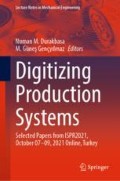Abstract
One substantial need for human beings is “energy” in daily life. To generate energy especially from fossil fuels are frequently utilized. However; they are about to deplete day by day and this fluctuates fuel prices in addition to their adverse effect on environment. Leading countries are shifting their energy resources from fossil fuels to renewables sources such as wind energy, solar energy, biomass energy. Among the renewable sources, hydrogen energy is one of the most candidates to mitigate greenhouse gas emission and climate change. One other issue is storage of these generated energy. Increase in the demand of renewable energy is a driving force to develop more Lithium ion batteries (LIBs) and new battery chemistries. In the article, the comparison of batteries and fuel cells in various aspects such as application areas and cost are given. The aim of this paper is to give comprehensive information about the better understanding of future of energy storage applications. According to literature, future of energy storage systems will be affected strongly by the developments in storage materials and systems.
Access this chapter
Tax calculation will be finalised at checkout
Purchases are for personal use only
References
Wang, Y., Chen, K.S., Cho, S.C.: PEM Fuel Cells: Thermal and Water Management Fundamentals: Momentum press, p. 386 (2013)
van Biert, L., Godjevac, M., Visser, K., Aravind, P.V.: A review of fuel cell systems for maritime applications. J. Pow. Sour. 64, 327-345 (2016)
Larrosa-Guerrero, A., Scott, K., Head, I.M., Mateo, F., Ginesta, A., Godinez, C.: Effect of temperature on the performance of microbial fuel cells. Fuel. 12, 89–94 (2010)
Mekhilef, S., Saidur, R., Safari, A.: Comparative study of different fuel cell technologies. Renew. Sustain. Energy Rev. 16(1), 981–989 (2012)
Lie, J., Tanda, S., Liu, J.-C.: Subcritical water extraction of valuable metals from spent lithium-ion batteries. Molecules 25(9), 2166 (2012)
Hemmat Esfe, M., Afrand, M.: A review on fuel cell types and the application of nanofluid in their cooling. J. Therm. Anal. Calorim. 140(4), 1633–1654 (2019). https://doi.org/10.1007/s10973-019-08837-x
Lipman, T., Sperling, D.: Market concepts, competing technologies and cost challenges for automotive and stationary applications. Handbook of Fuel Cells (2010)
Chawla, N., Bharti, N., Singh, S.: Recent advances in non-flammable electrolytes for safer lithium-ion batteries. Batteries. 5(1), 19 (2019)
Wu, J., Cao, Y., Zhao, H., Mao, J., Guo, Z.: The critical role of carbon in marrying silicon and graphite anodes for high-energy lithium-ion batteries. Carbon Energy. 1(1), 57–76 (2019)
Seng, K.H., Park, M.-H., Guo, Z.P., Liu, H.K., Cho, J.: Self-assembled germanium/carbon nanostructures as high-power anode material for the lithium-ion battery. Angew. Chem. Int. Ed. 51(23), 5657–5661 (2012)
Ryu, J., Hong, D., Lee, H.-W., Park, S.: Practical considerations of Si-based anodes for lithium-ion battery applications. Nano Res. 10(12), 3970–4002 (2017). https://doi.org/10.1007/s12274-017-1692-2
Yun, J.H., Kim, J.-H., Kim, D.K., Lee, H.-W.: Suppressing polysulfide dissolution via cohesive forces by interwoven carbon nanofibers for high-areal-capacity lithium-sulfur batteries. Nano Lett. 18(1), 475–481 (2018)
The Fuel Cell Industry Review (2019). https://www.e4tech.com/news/2018-fuel-cell-industry-review-2019-the-year-of-the-gigawatt.php
Ioannis, T., Dalius, T., Natalia, L.: Li-ion batteries for mobility and stationary storage applications,. Report No.: JRC113360 (2018)
Stampatori, D., Raimondi, P.P., Noussan, M.: Li-Ion batteries: a review of a key technology for transport decarbonization. Energies. 13, 26-38 (2020)
Agency IE. World Energy Outlook 2019. Paris, France: International Energy Agency (2019)
Tsiropoulos, I., Tarvydas, D.: Li-ion batteries for mobility and stationary storage applications Scenarios for costs and market growth (2018)
Finance BNE. New Energy Outlook 2018. Bloomberg New Energy Finance (BNEF) (2018)
Huisman, J., Ciuta, T., Bobba, S., Georgitzikis, K., Pennington, D.: Raw materials in the battery value Chain - final content for the raw materials information system – strategic value chains – batteries section (2020)
Felseghi, R., Carcadea, E., Raboaca, M., Trufin, C., Filote, C.: Hydrogen fuel cell technology for the sustainable future of stationary applications. Energies 12, 4593 (2019)
Study on Value Chain and Manufacturing Competitiveness Analysis for Hydrogen and Fuel Cells Technologies FCH contract 192. E4tech (UK) Ltd for FCH 2 JU in partnership with Ecorys and Strategic Analysis Inc. (2019)
Felseghi, R-A., Carcadea, E., Raboaca, M.S., Trufin, C.N., Filote, C.: Hydrogen fuel cell technology for the sustainable future of stationary applications. Energies 12(23), 4593 (2019)
BNEF. Long-Term Electric Vehicle Outlook 2018 (EVO 2018). Bloomberg New Energy Finance (BNEF) (2018)
Hydrogen. Paris: International energy agency -IEA (2020)
https://www.sciencedirect.com/science/article/am/pii/S0960148119304446
Schmidt, O., Hawkes, A., Gambhir, A., Staffell, I.: The future cost of electrical energy storage based on experience rates. Nat. Energy 2(8), 17110 (2017)
Hocking, M., JK, P., Young, C.T, Begleiter, D.: Lithium 101 F.I.T.T. for investors Welcome to the Lithium-ion Age, Deutsche Bank Market Research (2016)
Agency IE. Global EV Outlook 2018
Energy A. Battery market for Hybrid, Plug-in & Electric Vehicles. Avicenne Energy (2018)
Adesanya-Aworinde, V.: Electric bus sector is game changer for battery market (2016)
IRENA. Renewable Capacity Statistics 2020. IRENA
Nel to slash cost of electrolysers by 75 % wghaspafHb. Recharge News 2021. www.rechargenews.com/transition/nel-to-slash-cost-ofelectrolysers-by-75-with-green-hydrogen-at-sameprice-as-fossil-h2-by-2025/2-1-949219
Kannah, R.Y., et al.: Techno-economic assessment of various hydrogen production methods - a review. Biores. Tech. 319, 124175 (2021)
Mo, J.Y., Jeon, W.: The impact of electric vehicle demand and battery recycling on price dynamics of lithium-ion battery cathode materials: a vector error correction model (VECM) analysis. Sustainability 10(8), 2870 (2018)
Europian Comission, Materials dependencies for dual-use technologies relevant to Europe’s defence sector (2019)
Liu, Y., Zhang, R., Wang, J., Wan, Y.: Current and future lithium-ionbattery manufacturing. Science 24, 102332 (2021)
IEA. Batteries and hydrogen technology: keys for a clean energy future (2020)
Author information
Authors and Affiliations
Corresponding author
Editor information
Editors and Affiliations
Rights and permissions
Copyright information
© 2022 The Author(s), under exclusive license to Springer Nature Switzerland AG
About this paper
Cite this paper
Zengin, F., Okumuş, E., Ateş, M.N., Tunaboylu, B. (2022). Applications and Expectations of Fuel Cells and Lithium Ion Batteries. In: Durakbasa, N.M., Gençyılmaz, M.G. (eds) Digitizing Production Systems. Lecture Notes in Mechanical Engineering. Springer, Cham. https://doi.org/10.1007/978-3-030-90421-0_8
Download citation
DOI: https://doi.org/10.1007/978-3-030-90421-0_8
Published:
Publisher Name: Springer, Cham
Print ISBN: 978-3-030-90420-3
Online ISBN: 978-3-030-90421-0
eBook Packages: EngineeringEngineering (R0)

